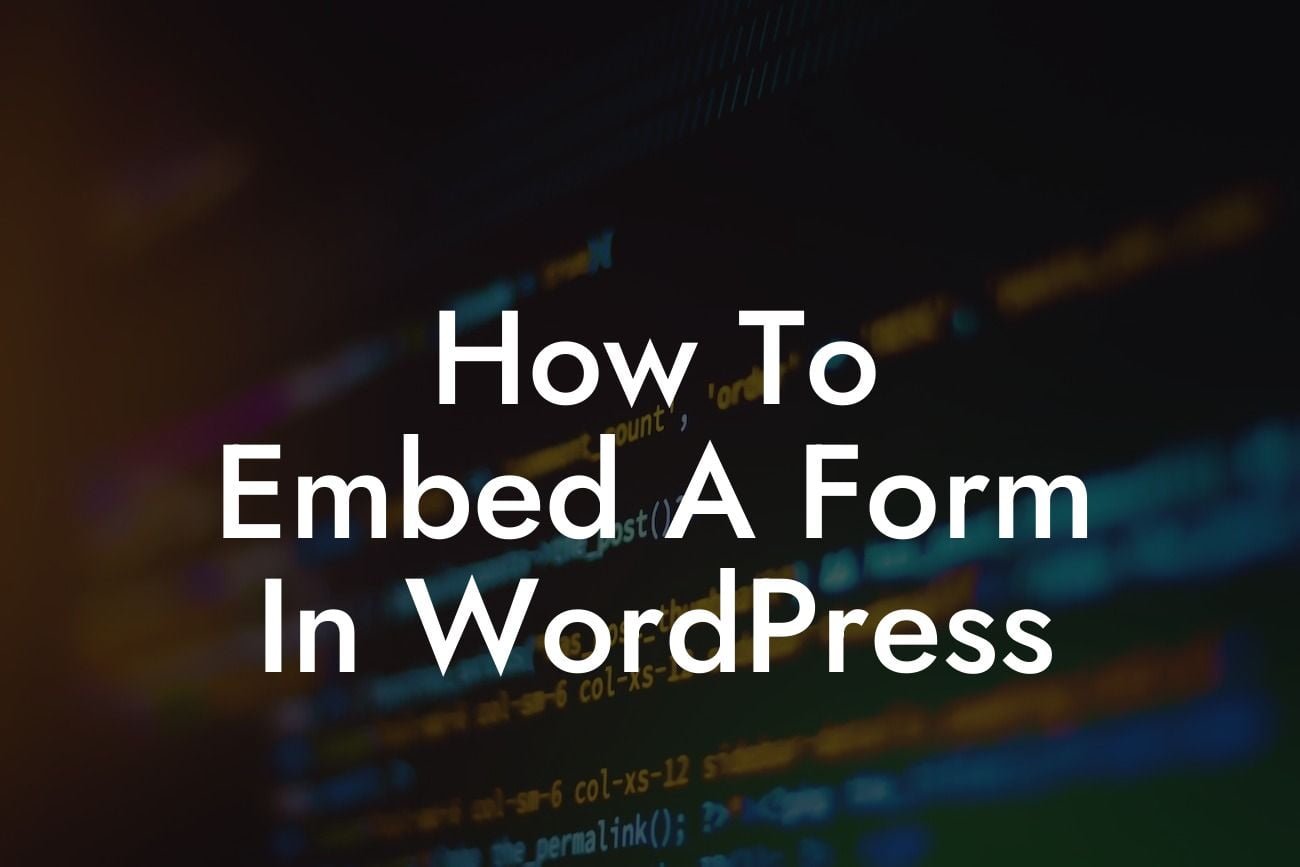Embedding a form in WordPress is a crucial step to enhance user engagement, capture valuable data, and drive conversions for your website. Whether you're a small business owner or an entrepreneur looking for a user-friendly way to collect information from your audience, this step-by-step guide will walk you through the process of embedding a form in WordPress with ease. Say goodbye to the hassle of custom coding and join us on the journey towards a more interactive and successful website.
Creating a form that seamlessly integrates with your WordPress website doesn't have to be complicated. With the right tools and guidance, you can achieve a professional and user-friendly form that elevates your online presence. Here's a detailed breakdown of the steps you need to follow:
1. Choosing a Form Plugin: The first step is selecting a reliable form plugin that suits your needs. DamnWoo offers a range of WordPress plugins tailored for small businesses and entrepreneurs, ensuring an exceptional user experience.
2. Installing the Plugin: Once you've selected a form plugin, installing it on your WordPress site is a breeze. Follow the plugin's installation guide, activate it, and get ready to unleash its potential.
3. Creating a Form: With the plugin up and running, it's time to create your form. Start by defining the necessary fields, such as name, email, subject, and message. Take advantage of the plugin's customization options to match your form's design with the overall aesthetics of your website.
Looking For a Custom QuickBook Integration?
4. Configuring Form Settings: Every form requires specific settings to ensure it functions properly. Adjust options such as email notifications, submission messages, and spam prevention measures. Make sure to carefully review these settings to provide a seamless experience to your users.
5. Embedding the Form: With your form ready, it's time to embed it into your WordPress website. Copy the provided shortcode or use the plugin's widget feature to add the form to your desired page or post. Preview your changes and adjust the placement as needed.
How To Embed A Form In Wordpress Example:
Let's say you're a freelance photographer offering various packages for events. To streamline your booking process, you decide to embed a form on your website. Using DamnWoo's WordPress plugin, you create a sleek form with fields for the event date, location, and specific requirements. Once embedded, visitors can effortlessly provide all the necessary information, allowing you to deliver a seamless booking experience.
Now that you're equipped with the knowledge to embed a form in WordPress, take the next step to supercharge your website's success. Explore other comprehensive guides on DamnWoo, covering a wide range of topics to elevate your online presence. Additionally, don't miss out on trying our awesome plugins designed exclusively for small businesses and entrepreneurs. Share this article with others in the community who may benefit from learning how to embed a form in WordPress. Together, let's embrace extraordinary solutions and thrive in the digital world.













